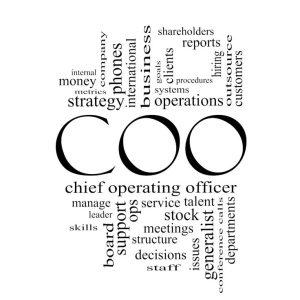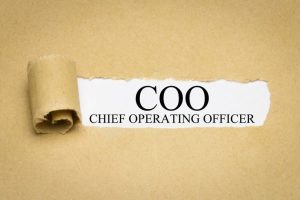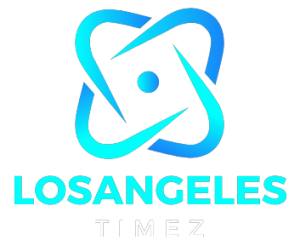What is CEO and COO? Understanding the Role
What is CEO and COO?
Imagine a company as a well-oiled machine. The CEO is the visionary architect, designing the machine’s purpose and overall direction. The COO, on the other hand, is the master mechanic, ensuring the machine runs smoothly and efficiently day-to-day. Let’s delve into the specific roles of the CEO and COO and how they work together to achieve a company’s goals.
Introduction to CEO and COO
The CEO and COO are vital cogs in the wheel of any organization’s leadership. While both hold significant authority, their roles differ in focus and scope. The CEO typically occupies the highest-ranking position in a company, steering its strategic direction and representing it externally. In contrast, the COO is responsible for the day-to-day operations, ensuring that the business runs smoothly and efficiently. Also, read about Is a CFO an Accountant
Understanding the Role of the CEO
Responsibilities
As the highest-ranking executive, the CEO shoulders the ultimate responsibility for the company’s performance and success. They set the overall direction, goals, and strategies, working closely with other executives and the board of directors to achieve them.
Leadership and Vision
A CEO is expected to be a visionary leader, capable of inspiring and motivating teams towards a shared goal. They must possess a clear vision for the company’s future and communicate it effectively to stakeholders, employees, and customers.
Decision Making
One of the primary roles of a CEO is making critical decisions that shape the organization’s trajectory. This includes choices related to investments, mergers and acquisitions, resource allocation, and risk management. Discover more Who is more powerful than the CEO
Exploring the Role of COO
Operational Oversight
The COO focuses on the day-to-day operations of the company, ensuring that processes are efficient and aligned with strategic objectives. They often work closely with department heads to streamline workflows and improve productivity.
Implementing Strategies
While the CEO sets the strategic direction, it’s the COO’s responsibility to translate these plans into actionable initiatives. They oversee the implementation of strategies, monitor progress, and make adjustments as needed to stay on course.
Working with Other Executives
The COO collaborates closely with other members of the executive team, including the CEO, CFO, and CMO, to ensure alignment across different functions. They play a crucial role in fostering cross-departmental collaboration and breaking down silos.

Key Differences Between CEO and COO
Focus Areas
While the CEO focuses on long-term vision and strategy, the COO is more concerned with day-to-day operations and execution.
Reporting Structure
The CEO typically reports directly to the board of directors, while the COO often reports to the CEO, although reporting structures may vary depending on the organization.
Decision-Making Authority
While both roles involve decision-making, the CEO usually has the final say on major strategic matters, whereas the COO has more authority over operational decisions.
Qualities of an Effective CEO
Visionary Leadership
A successful CEO possesses a compelling vision for the company’s future and the ability to inspire others to share in that vision.
Strategic Thinking
They must be strategic thinkers, capable of anticipating market trends, identifying opportunities, and navigating challenges effectively.
Communication Skills
Effective communication is key for a CEO to convey their vision, motivate employees, and build trust with stakeholders.

Qualities of an Effective COO
Operational Efficiency
An effective COO is adept at optimizing processes and workflows to maximize efficiency and productivity.
Team Collaboration
They must excel at building and leading cross-functional teams, fostering a collaborative work environment where everyone is aligned toward common goals.
Adaptability
Given the fast-paced nature of business, a COO must be adaptable and agile, able to pivot quickly in response to changing market conditions or internal challenges.
Examples of Successful CEOs and COOs
Throughout history, there have been numerous examples of outstanding CEOs and COOs who have made significant contributions to their companies’ success. From visionary leaders like Steve Jobs at Apple to operational gurus like Sheryl Sandberg at Facebook, these individuals have left an indelible mark on the business world.
Challenges Faced by CEOs and COOs
Managing Expectations
CEOs and COOs often face pressure from stakeholders, shareholders, employees, and customers, requiring them to navigate competing demands and expectations effectively.
Handling Pressure
The high-stakes nature of their roles means that CEOs and COOs must be able to perform under pressure, make tough decisions, and lead with confidence even in challenging circumstances.
Balancing Responsibilities
Balancing the demands of strategic leadership with the day-to-day operational needs of the business can be a significant challenge for CEOs and COOs, requiring careful prioritization and delegation.
Conclusion
In conclusion, the roles of CEO and COO are critical to the success of any organization. While the CEO sets the strategic direction and provides visionary leadership, the COO ensures that the company’s operations are running smoothly and efficiently. By understanding the distinct responsibilities and qualities required for each role, businesses can build strong leadership teams capable of driving sustainable growth and innovation.
FAQs
What qualifications are typically required for a CEO or COO position?
While specific qualifications may vary depending on the industry and company, most CEOs and COOs have extensive experience in senior leadership roles, strong strategic and operational acumen, and excellent communication skills.
How do CEOs and COOs collaborate within an organization?
CEOs and COOs often work closely together, with the CEO providing strategic direction and the COO overseeing day-to-day operations. Effective collaboration between these two roles is essential for driving organizational success.
What are some common challenges faced by CEOs and COOs?
Challenges can include managing stakeholder expectations, handling pressure, balancing competing priorities, and navigating organizational change.
Can a CEO also serve as a COO, or vice versa?
While it’s technically possible for someone to hold both positions simultaneously, it’s uncommon due to the distinct focus and responsibilities associated with each role.
How do CEOs and COOs measure success in their respective roles?
CEOs often measure success based on overall company performance, financial metrics, and strategic objectives, while COOs may focus more on operational efficiency, productivity gains, and process improvements.
